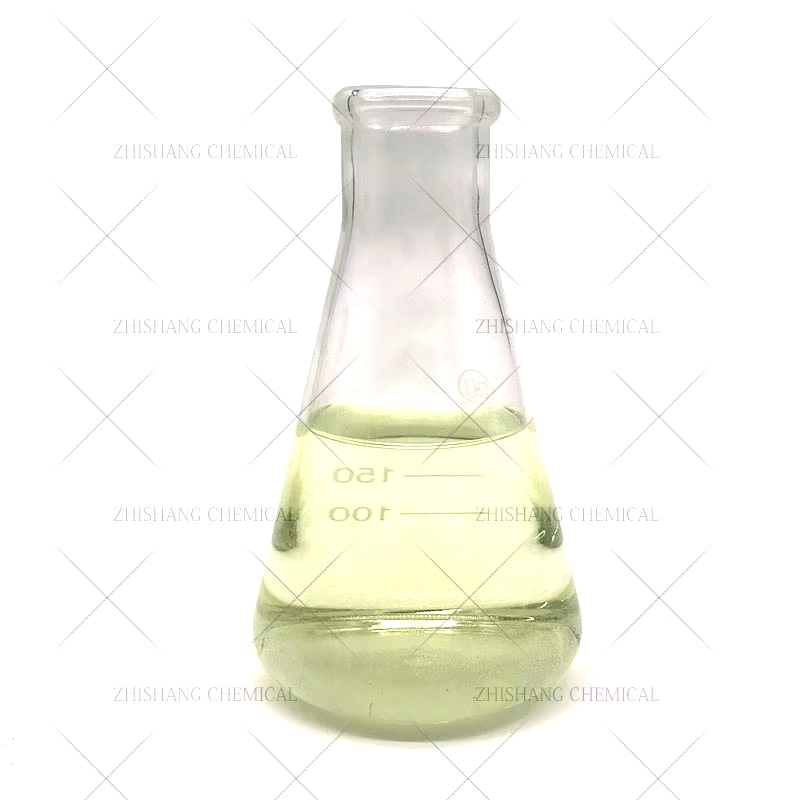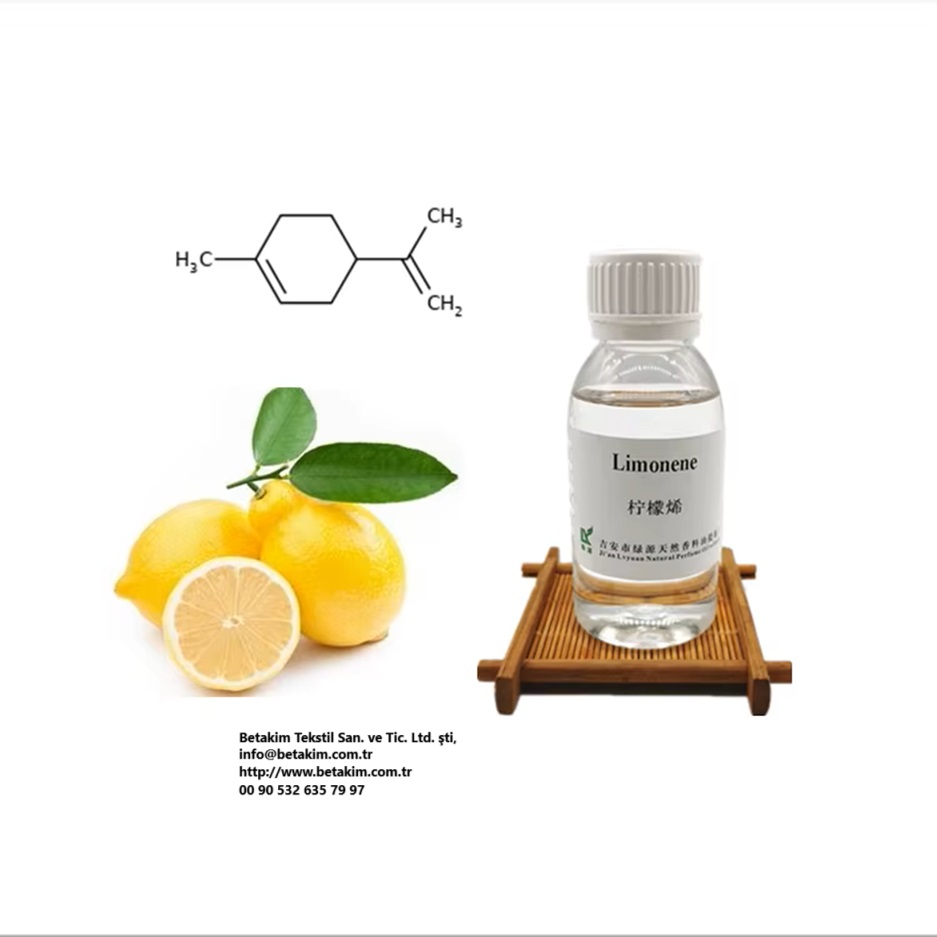We unleash your business potential by maximize the business innovation.
Send EmailDL-Limonene, dipentene, 138-86-3, 555-08-8, 7705-14-8, 8022-90-0, 8050-32-6
CAS: 138-86-3;555-08-8;7705-14-8;8022-90-0;8050-32-6
Molecular Formula: C10H16
Names and Identifiers
| Name | DL-Limonene |
| Synonyms | dipentene DL-Limonene Cyclohexene, 1-methyl-4-(1-methylethenyl)- (4S)-1-methyl-4-(prop-1-en-2-yl)cyclohexene |
| CAS | 138-86-3 555-08-8 7705-14-8 8022-90-0 8050-32-6 |
| EINECS | 231-732-0 |
| InChI | InChI=1/C10H16/c1-8(2)10-6-4-9(3)5-7-10/h4,10H,1,5-7H2,2-3H3/t10-/m1/s1 |
Physico-chemical Properties
| Molecular Formula | C10H16 |
| Density | 0.834g/cm3 |
| Melting Point | -97℃ |
| Boling Point | 175.4°C at 760 mmHg |
| Flash Point | 42.8°C |
| Water Solubility | <1 g/100mL |
| Vapor Presure | 1.54mmHg at 25°C |
| Refractive Index | 1.467 |
Risk and Safety
| Hazard Symbols | Xi - Irritant N - Dangerous for the environment  |
| Risk Codes | R10 - Flammable R38 - Irritating to the skin R43 - May cause sensitization by skin contact R50/53 - Very toxic to aquatic organisms, may cause long-term adverse effects in the aquatic environment. |
| Safety Description | S24 - Avoid contact with skin. S37 - Wear suitable gloves. S60 - This material and its container must be disposed of as hazardous waste. S61 - Avoid release to the environment. Refer to special instructions / safety data sheets. |
| UN IDs | UN 2052 |
Nature
There are two kinds of isomers of the right and the left. Found in a variety of essential oils, especially lemon oil, orange seed oil, tarsaria oil, rose oil, bergamot oil. It is a colorless flammable liquid at room temperature and has a good smell of lemon.
Preparation Method
This product is widely found in natural plant essential oils. Among them, the main ones containing dextrose are orange oil, lemon oil, orange oil, camphor white oil and so on. Containing levorotatory body of peppermint oil and so on. Containing racemate of neroli oil, Fir Oil and camphor white oil. In the manufacture of this product, respectively from the above essential oils for fractionation, can also be extracted from the general essential oil terpene, or in the process of processing camphor oil and synthetic camphor, as a by-product. The resulting dipentene was purified by distillation to obtain rostoene. Turpentine oil is used as the raw material, and a-pinene is cut out by fractionation, which is obtained by isomerization to produce pinene and then fractionation. The by-product of camphene is dipentene. In addition, dipentene can also be produced by hydration of turpentine to terpineol.
Use
used as a solvent for enamel, false paint, various oleoresin, resin wax, Metal Drier; Used in the manufacture of synthetic resin; As a perfume to prepare orange flower oil and orange oil, can also be made into a substitute for lemon essential oil; Can also be synthesized carvone and so on. Used as oil dispersants, rubber additives, wetting agents.
Safety
- This product is non-toxic.
- This product is packed in iron or aluminum barrels with a net weight of 170kg or 50kg per barrel. Sealed storage in a cool, ventilated place. Fire Protection, sun protection. According to the general provisions of flammable chemicals storage and transportation.
DL-Limonene, 555-08-8
DL-Limonene
CAS: 138-86-3;555-08-8;7705-14-8;8022-90-0;8050-32-6
Molecular Formula: C10H16
Names and Identifiers
| Name | DL-Limonene |
| Synonyms | dipentene DL-Limonene Cyclohexene, 1-methyl-4-(1-methylethenyl)- (4S)-1-methyl-4-(prop-1-en-2-yl)cyclohexene |
| CAS | 138-86-3 555-08-8 7705-14-8 8022-90-0 8050-32-6 |
| EINECS | 231-732-0 |
| InChI | InChI=1/C10H16/c1-8(2)10-6-4-9(3)5-7-10/h4,10H,1,5-7H2,2-3H3/t10-/m1/s1 |
Physico-chemical Properties
| Molecular Formula | C10H16 |
| Density | 0.834g/cm3 |
| Melting Point | -97℃ |
| Boling Point | 175.4°C at 760 mmHg |
| Flash Point | 42.8°C |
| Water Solubility | <1 g/100mL |
| Vapor Presure | 1.54mmHg at 25°C |
| Refractive Index | 1.467 |
Risk and Safety
| Hazard Symbols | Xi - Irritant N - Dangerous for the environment  |
| Risk Codes | R10 - Flammable R38 - Irritating to the skin R43 - May cause sensitization by skin contact R50/53 - Very toxic to aquatic organisms, may cause long-term adverse effects in the aquatic environment. |
| Safety Description | S24 - Avoid contact with skin. S37 - Wear suitable gloves. S60 - This material and its container must be disposed of as hazardous waste. S61 - Avoid release to the environment. Refer to special instructions / safety data sheets. |
| UN IDs | UN 2052 |
Nature
There are two kinds of isomers of the right and the left. Found in a variety of essential oils, especially lemon oil, orange seed oil, tarsaria oil, rose oil, bergamot oil. It is a colorless flammable liquid at room temperature and has a good smell of lemon.
Preparation Method
This product is widely found in natural plant essential oils. Among them, the main ones containing dextrose are orange oil, lemon oil, orange oil, camphor white oil and so on. Containing levorotatory body of peppermint oil and so on. Containing racemate of neroli oil, Fir Oil and camphor white oil. In the manufacture of this product, respectively from the above essential oils for fractionation, can also be extracted from the general essential oil terpene, or in the process of processing camphor oil and synthetic camphor, as a by-product. The resulting dipentene was purified by distillation to obtain rostoene. Turpentine oil is used as the raw material, and a-pinene is cut out by fractionation, which is obtained by isomerization to produce pinene and then fractionation. The by-product of camphene is dipentene. In addition, dipentene can also be produced by hydration of turpentine to terpineol.
Use
used as a solvent for enamel, false paint, various oleoresin, resin wax, Metal Drier; Used in the manufacture of synthetic resin; As a perfume to prepare orange flower oil and orange oil, can also be made into a substitute for lemon essential oil; Can also be synthesized carvone and so on. Used as oil dispersants, rubber additives, wetting agents.
Safety
- This product is non-toxic.
- This product is packed in iron or aluminum barrels with a net weight of 170kg or 50kg per barrel. Sealed storage in a cool, ventilated place. Fire Protection, sun protection. According to the general provisions of flammable chemicals storage and transportation.


